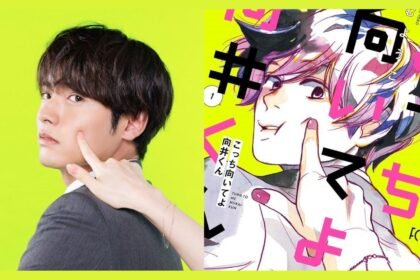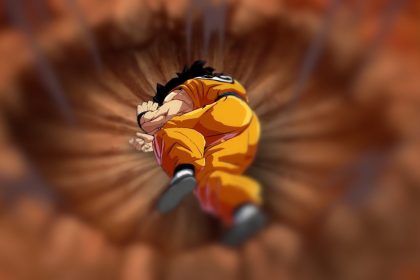Introduction
The Fate series, a renowned Japanese media franchise, has taken the world by storm with its unique blend of historical figures, mythical legends, and modern-day storytelling. But have you ever wondered how accurately these figures are portrayed? Or why some male historical figures are turned into female characters? Let’s dive deep into the world of Fate and uncover the mysteries behind these portrayal.
Historical Accuracy vs. Artistic License
The Balance of Fact and Fiction
In the world of Fate, historical accuracy often takes a backseat to artistic license. While the series does draw inspiration from real-life figures, it’s not uncommon for the creators to take creative liberties. For instance, the character of Nero Claudius, based on the Roman Emperor Nero, is depicted as a passionate and flamboyant woman, a stark contrast to the male tyrant of history. But why the change? It’s all about creating engaging and memorable characters that resonate with the audience. After all, isn’t it fascinating to see a familiar historical figure in a completely new light?
The Controversy of Gender-Bending
One of the most debated aspects of the Fate series is the gender-bending of historical figures. From King Arthur to Francis Drake, many characters have undergone a gender transformation. But why? Some argue it’s a marketing strategy to appeal to a broader audience, while others believe it’s a fresh take on well-known figures. Whatever the reason, it’s undeniable that these gender-swapped characters have left a lasting impression on fans.
Further Readings: Fate/Stay Night, From Visual Novel Into Anime
Popular Characters and Their Real-Life Counterparts
Astolfo: The Unexpected Fan Favorite
Astolfo, a character based on one of Charlemagne’s Twelve Paladins, has become a fan favorite in the Fate series. But what’s the secret behind his popularity? In the series, Astolfo is portrayed as a cheerful and androgynous Rider-class servant, a departure from the valiant knight of legend. This reimagining, combined with his captivating design and personality, has endeared him to fans worldwide.
The Diverse Cast: From Joan of Arc to Leonardo da Vinci
The Fate series boasts a diverse cast of characters, each with their unique backstory and design. Joan of Arc, the revered French heroine, is depicted as a righteous and determined Ruler-class servant. On the other hand, Leonardo da Vinci, the Renaissance polymath, is portrayed as a charismatic and inventive Caster-class servant. These interpretations, while not always historically accurate, offer a fresh perspective on iconic figures, making the series all the more intriguing.
The Creative Liberties of the Fate series portrayal
The Art of Reimagining
Reimagining historical figures is an art, and the Fate series has mastered it. By blending fact with fiction, the creators have given new life to age-old legends. Whether it’s the fierce warrior Scáthach or the cunning strategist Zhuge Liang, each character is a testament to the series’ imaginative prowess.
The Impact on Popularity and Reception Fate Series Portrayal
The Fate series’ creative liberties have had a significant impact on its popularity and reception. While some purists argue that the series distorts history, many fans appreciate the fresh and innovative take on familiar figures. The series’ ability to strike a balance between historical accuracy and creative freedom is a key factor in its enduring appeal.
The Best and Worst Representations
Characters That Shine
Some characters in the Fate series are lauded for their accurate and compelling portrayals. For instance, Ozymandias, based on the Pharaoh Ramesses II, is praised for his majestic and authoritative depiction. Similarly, the character of Gilgamesh, inspired by the ancient Mesopotamian king, is celebrated for his complex and multi-dimensional portrayal.
Characters That Missed the Mark
While the Fate series has its share of hits, it also has a few misses. Some characters, like Jack the Ripper and Atalanta, have faced criticism for their portrayals. Whether it’s due to historical inaccuracies or character design, these representations have sparked debates among fans and critics alike.
Understanding the Fate Phenomenon
The Appeal of the Series
What makes the Fate series so captivating? Is it the intricate plot, the dynamic characters, or the fusion of history and fantasy? The answer is a combination of all these elements. The series offers a unique blend of action, drama, and romance, making it a must-watch for anime enthusiasts.
The Legacy and Influence
The Fate series has left an indelible mark on the world of anime. Its influence can be seen in various media, from video games to merchandise. The series’ legacy is a testament to its innovative storytelling and memorable characters.
Conclusion
The Fate series, with its blend of history and fantasy, has carved a niche for itself in the world of anime. While it may take creative liberties with historical figures, it offers a fresh and engaging perspective on familiar legends. Whether you’re a history buff or an anime fan, the Fate series promises an unforgettable journey through time and imagination.
FAQs Fate series portrayal
- Why does the Fate series gender-bend historical figures?
- The series often takes creative liberties to offer a fresh perspective on well-known figures and appeal to a broader audience.
- Is the Fate series historically accurate?
- While the series draws inspiration from real-life figures, it often prioritizes artistic license over historical accuracy.
- Who is the most popular character in the Fate series?
- Characters like Astolfo and Gilgamesh are among the fan favorites, but the series boasts a diverse cast with varying levels of popularity.
- Why is the Fate series so popular?
- The series’ unique blend of history, fantasy, action, and drama, combined with its memorable characters, contributes to its widespread appeal.
- Are there any other series similar to Fate?
- While the Fate series is unique in its approach, there are other anime that blend history and fantasy, such as “Drifters” and “Hetalia.”













